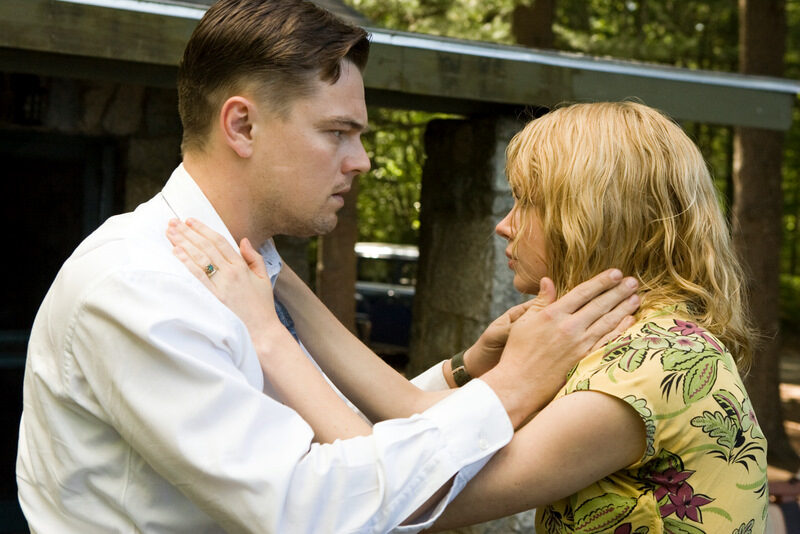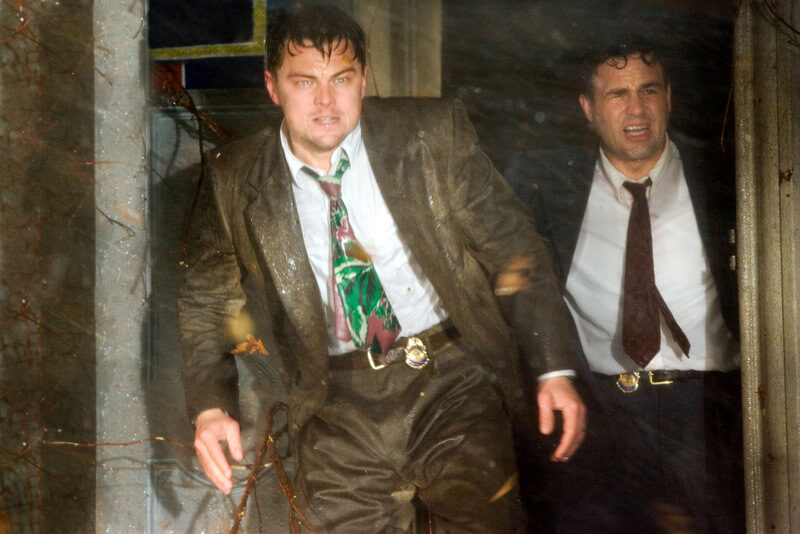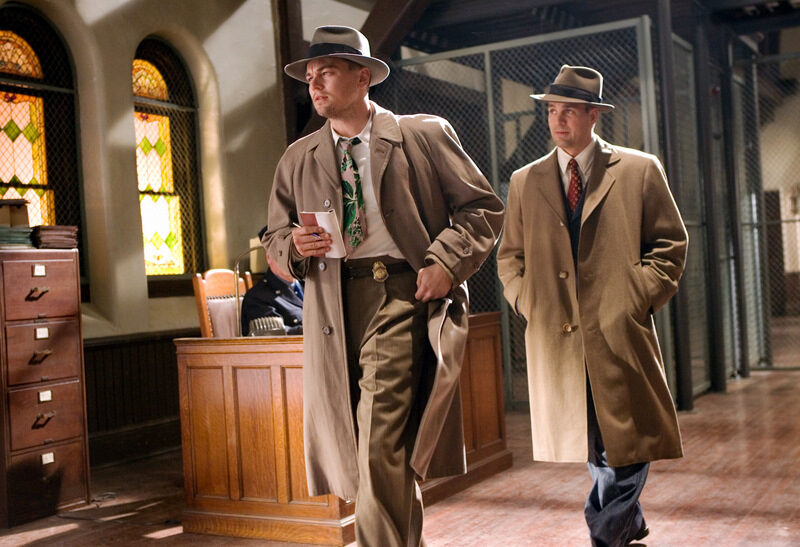Film Review: Shutter Island | Clothes on Film
© 2010, Clothes on Film 
Starring: Leonardo DiCaprio, Mark Ruffalo, Ben Kingsley
Directed By: Martin Scorsese
Only daft final act revelations offer release from Scorsese’s cinematic madhouse; otherwise the smart, scary onslaught of insane ideas and imagery is inescapable.
Does a film need a satisfying story to succeed? It’s a question worth asking of Shutter Island (2010) because, by any sane criteria, its narrative is founded on one of the most ludicrous premises in memory – a suspension bridge of disbelief that comes crashing down the minute it is revealed. And yet, aptly considering Martin Scorsese’s film is in part a loving tribute to Hitchcock, Psycho has a rubbish ending too, and it doesn’t stop that film from being endlessly rewatchable.
Like Psycho, it’s all in the telling. Shutter Island builds its menace by stealth, a brilliantly modulated prison of claustrophobic camera angles, steely colour palettes, sharp edits and oppressive sound design. Only in the strategic insertion of dream sequences does the film escape into bold, operatic splashes of colour and movement. But that path too leads only to madness, with nightmarish images of corpses in concentration camps, Barton Fink-esque visions of burning buildings and, most memorably, an inexorable tracking pan of a massacre that rivals a similar shot in Oldboy for visceral impact.
Gradually the screws are tightened, and Leonardo DiCaprio’s face gets more and more pinched. It’s an astonishingly selfless performance: gaunt, glassy-eyed and dressed in a humiliating proto-Guantanamo jumpsuit, his shabby-chic noir ‘tec threads having been soaked in the ongoing storm that punctuates the action. It’s confirmation that the actor is learning new tricks with each successive collaboration with the master, but, twitchiness aside, in many ways DiCaprio is in the still centre of a storm of bonkers character actors, with Scorsese knowingly casting Don Logan, Ming The Merciless, Rorschach, Buffalo Bill and the probably Zodiac killer as wardens, doctors and patients. Each is wheeled on to deliver his lines with the odd mannerisms and near-comic inflections of countless killer bees, as if Scorsese sat the cast down to watch Sam Fuller’s Shock Corridor before shooting and said “That’s what I’m after.”
And then there are the women. Emily Mortimer, Patricia Clarkson and Michelle Williams, a trio of sirens representing various stages of hysteria. Each significantly unsettles DiCaprio’s sense of self: Mortimer, unnervingly sensual and frisky under interrogation; Clarkson, an intellectual prophetess of conspiracy seeing connections beyond DiCaprio’s working class Ken; Williams, as DiCaprio’s tragic wife, less the perfect bride than a fragile flower he was unable to save.
It is worth pointing out that women have often been a threat to the sanity of Scorsese’s macho men. Think of Travis Bickle’s deranged attempts to woo Cybil Shepherd and protect Jodie Foster, Jake LaMotta’s seething jealousy of his wife’s innocent flirtations, or the brood of urban harpies who ignite Griffin Dunne’s night of hell in After Hours. But it’s more pronounced here than ever and, as an increasingly bewildered DiCaprio bounces from one dreamlike encounter to another, suddenly Shutter Island’s natural twin reveals itself: Eyes Wide Shut.
Like Kubrick’s swansong, this is another long dark night of the soul where the jittery hero can never quite trust the women he meets. The difference is that, where Stanley Kubrick’s film was about sex, Scorsese’s subject, as ever, is violence, driven by the growing sense that DiCaprio’s tightly coiled protagonist is going to snap free of his repression at any moment.
The nuthouse is where so many Scorsese movies never quite reached, and now that he’s here Scorsese isn’t going to let us off easy. It’s a sustained experiment in using cinema to induce a palpable sense of paranoia, not just in the obvious shock tactics of madmen jumping out of the shadows – although, sure, that stuff happens – but in a genuine unpredictability of style. One recurring motif is an anxious, elliptical separation of sound and image, where it’s plain that the speaking character isn’t actually moving their lips in the shot. A disconcerting, haunting effect. Then there’s the sudden segue of tone in the final devastating flashback, where this chilly film finds heart-rending tragedy in warm sunshine.
Scorsese is messing with our heads on so many levels that it can’t be a coincidence that Elias Koteas’s brief cameo is shot in such a way he looks virtually identical to Robert De Niro. Bet there’s some folk leaving the cinema convinced they’d just seen Marty and Bobby’s ninth collaboration.
This is a guest post by Simon Kinnear, a freelance movie/TV journalist for, among others, Total Film, SFX and Doctor Who magazine. When the mood takes him, Simon also introduces films at the Derby Quad art-house cinema.
© 2010 – 2012, Simon Kinnear.
Related Posts:

